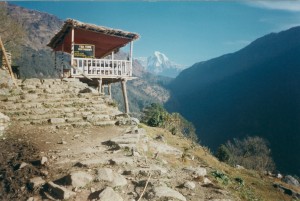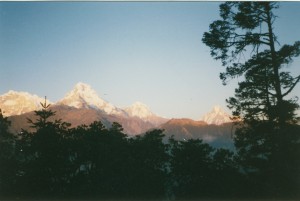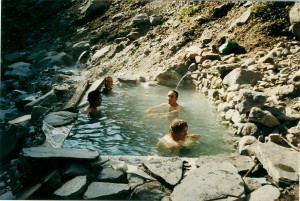
As the leaves begin to turn and tumble here in the UK, our thoughts drift to Nepal and the Annapurna circuit trail, perhaps the greatest trekking experience you are ever likely to experience.
October and November were always the prime months to experience this high altitude trek which is between 160 and 230 km long (depending where you start) and rises to 5,400 metres.
At this time of year the monsoons have recently finished so the countryside still looks lush. The weather is warm and dry and the views are clear, allowing you to see the Himalayan landscape at its best.

A few years back I enjoyed an incredible two weeks in the Annapurna region of Nepal. We travelled independently, getting together all the necessary paperwork and trekking permit on arrival in Kathmandu. We decided against using a guide and porter (although these could easily be hired). We made our way by bus to Besisahar (via Pokhara, Nepal’s second city) to start our trek. Simple lodges along the way provided comfortable accommodation and meals (mainly rice and lentil dahl) in beautiful unspoilt Nepalese villages- which were only accessible on foot.

Yet this unforgettable Annapurna experience is now being compromised by the construction of a new road through the region. The road building began in 2005 and is due to be completed by 2017.
Funded by the Chinese, the road creates improved transport links to and from new hydro electric projects and offers previously remote villages and communities better access to the outside world.
Such economic development may improve living standards and the prospects for impoverished local communities. For the trekking community – and the tourist industry linked to it – the unforgettable Annapura experience will never be the same again.
Much of the new road network has been built on the Annapurna trail. It’s no surprise then that the number of hikers choosing to walk the famous circuit is in sharp decline.
Alternative routes are now being offered to those who come to Nepal to hike, allowing them to travel on foot away from the road and the vehicles that blight the original Annapura trail.
Yet for many this just isn’t the same. The original Annapura experience has been lost forever.
The route itself may be falling out of favour with those that seek peace and tranquillity as they hike across the Himalayas, but one person’s loss is another person’s gain. The new road is opening up new tourist opportunities: tour companies are now courting mountain bikers, to experience an adrenalin rush at the high altitude along the Annapura trail, this time on two wheels. But some operators say only parts of the trail are suitable for bikes such as the initial section from Besishar to Syange where many now opt for some transport instead of trekking for 3 days along a dusty road.
And who’s to say that the new routes, once developed, will not offer similar – or even better – trekking routes to the Annapurna, once they have been established.
The Annapurna was amazing for me. Others can no longer experience it in the same way. Yet, it’s hard to deny the Nepalese the opportunity to develop and enjoy a fraction of our own prosperity, just so that we can preserve the Annapurna trail, the way we remember it and want it to remain.
Ruth
http://www.bbc.co./news/magazine-18358056
http://msabelli.wordpress.com/2013/03/27/jeep-trekkingannapurna-circuit/
http://www.nepal-dia.de/Trekking_the_Annapurna_Circuit_with_the_new_NATT_trails_111017.pdf
http://members.virtualtourist.com/m/p/m/1c93b5/
